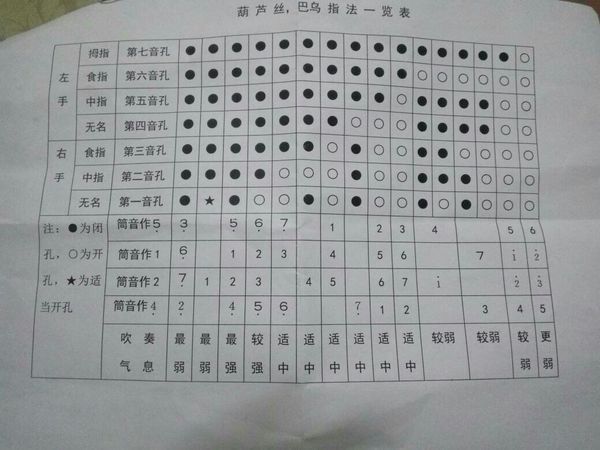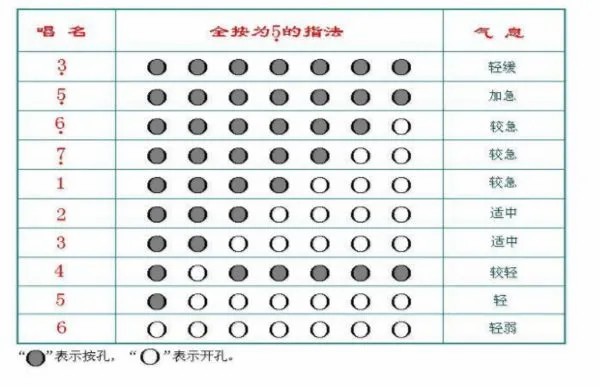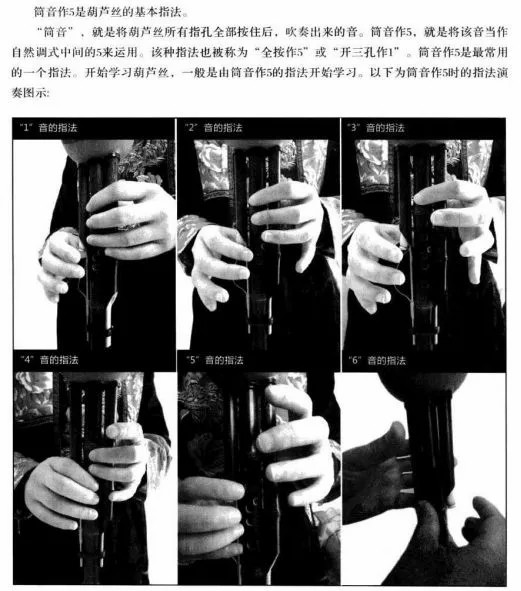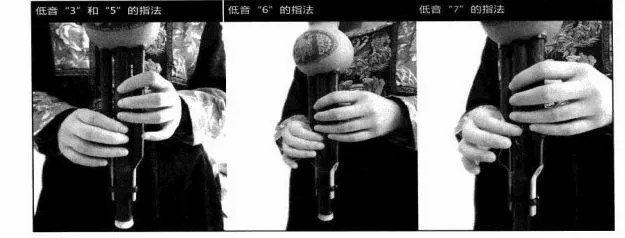Diagram of the correct placement of fingers when the cucurbit flute tone is 5
Beginners and self-learners usually have questions.

Take this table as an example, this table is a comprehensive fingering table of cucurbit flute, which brings together four fingering tables for bass 5, bass 1, bass 2 and bass 4.
The two columns on the left of this table indicate the positions of the fingers of both hands when holding the cucurbit silk. The following marks indicate the opening and closing of the sound hole - the black dot indicates that the sound hole is closed, the white dot indicates that the sound hole is open, and the five-pointed star pattern indicates that the sound hole is half open and half closed (the opening and closing can be adjusted appropriately. size).
The right side of this table is the indication of the sound hole and the name. It can be seen that from bottom to top, the bottom sound hole of the cucurbit flute is called the first sound hole; the penultimate sound hole is called the second sound hole...and the most The sound hole above is actually on the back of the hulusi, called the seventh sound hole.
Let's talk about the graphic meaning of the fingering of the bass 5:
When the drum sound is used as the bass 5, the bass 3 and the bass 5 are the same fingering, that is to close all the sound holes of the cucurbit flute (the sound holes are all black dots) and play the sound (strong blowing is bass 5, weak blowing for bass 3);
Only open the first sound hole (the first sound hole is a white dot, the rest are black dots), and the sound is the bass 6;
Only open the first and second sound holes (the first and second sound holes are white dots) and play the bass 7;
Only open the first, second, and third sound holes (the first, second, and third sound holes are white dots).
- If you see a black dot, it means that the sound hole is closed, and if you see a white dot, it means that the sound hole is open.
Other fingerings, such as 1, 2, etc., and so on.
The following is the correct placement of the fingers of the tunyin Zuo 5.



 渝公网安备 50010702504639号
渝公网安备 50010702504639号